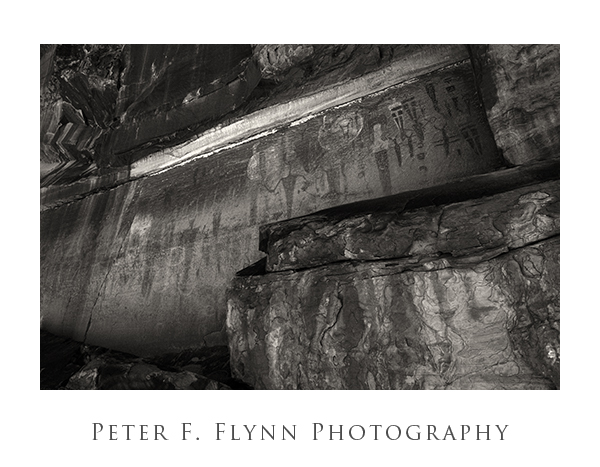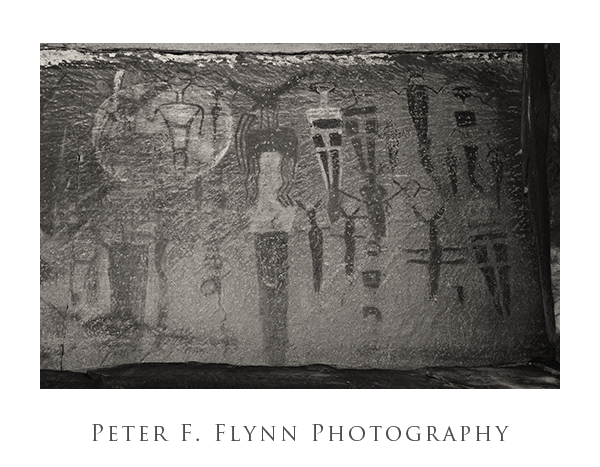There are a number of excellent rock art panels in the area around Moab, UT. Perhaps the most accessible of these is the panel that may be found by wandering up the slope at the southern end of the Courthouse Wash Trail that leads out of Arches NP. This area is just north of US191 at the northern edge of town, about 0.5 mile west-northwest of the bridge that crosses the Colorado River. The panel was vandalized in 1980 and stabilized but not restored. A Bureau of Land Management website briefly describes the location and recent history of the site.


The art is typical of the Barrier Canyon archetype, with large armless trapezoidal anthropomorphs attended by smaller familiars. The style type may be found within the Horseshoe Canyon Unit of Canyonlands NP. Horseshoe Canyon was formerly known as Barrier Canyon, and this original name is the source of the title of this important rock art style. The most famous example is the Great Gallery panel, however other excellent examples exist in Barrier Canyon and in other locations centered around the confluence of the Green and Colorado rivers (Sego Canyon, Head of Sinbad, Moab, etc.). The style has been attributed with what archeologists have named the Late Archaic period (2000-500 BC), and the artists were believed to be members of a nomadic hunter-gatherer culture. What appears to be quite a lot of noise in the images is actually real texture on the rock surface resulting from the efforts of the vandals to scrub the art from the rock surface with wire brushes.
These images are from the archives, and were recorded at approximately 20:00 on June 23, 2006, using the Nikon D70s. The upper image was recorded using the AF-S DX NIKKOR 12-14mm f/4G IF-ED at 16mm with an exposure of f/18 at 1/40s, ISO 200. The lower image was recorded using the AF-S DX NIKKOR 18-70mm f/3.5-4.5G IF-ED at 70mm with an exposure of f/18 at 1/30s, ISO 200. Yeah, those f-stops are well past the diffraction limit for both lenses – you don’t become an image wiz just overnight, apparently. Images were processed to maximize contrast.